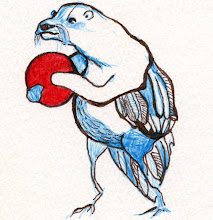The below images were accompanied a presentation, so I was able to explain much of the symbolism. I'll give a brief explanation here, so that they are a bit more decipherable. I divided my genealogy into three categories: thought, lived, and imagined. "Thought" includes the philosophical and artistic influences that have guided my academic and career choices, and in many cases, helped me wade through bigger questions about identity. "Lived," encompasses the jobs, actions, and tangible decisions that have directed my life, and "Imagined" includes the discarded possibilities (including college majors in set design and art, plans for immediately after college [boat building or studying textiles], and applying to architecture programs). I chose botanical/natural imagery to symbolize this discard because the process of setting aside possibilities played an important role in my intellectual and emotional growth. And because, as more casual interests, the discarded choices continue to nourish my life. Finally, the tangles on the 2nd and 3rd pages symbolize periods of confusion and hazy direction. I know this all sounds a little hippy-dippy, but this turned out to be an interesting and thought-provoking project, and it was a nice reprieve from the more technical assignments that I have for my Public Finance and Nonprofit Management classes.




3 comments:
Very cool, Caitlin! I love the idea and imagery of the "jungle" of your imagined life, but I want to see how/if all the jungles differ from each other. Like, how would you visually differentiate unrealized dreams/career paths/possibilities? Are they different, or can you comfortably lump them all under the category of "unrealized"?
I believe you intend "imagined" to refer to "unrealized", but I would argue that an imagined life can have as forcible an impact on your lived life as the stuff you realize and consider "real." I think you're kind of arguing the same thing--that the unrealized stuff has nourished your growth as an individual. I want your imagery to reflect the reality of that force on your life.
Bravo! Did you enjoy doing this??
Emily! Thank you for a true critique! That was the initial intention of this blog. I'm sure we'll talk about this person to person, but I think your points are excellent. I didn't give a great deal of thought to differentiating imagery for different kinds of imagined paths, but certainly those unrealized paths do hold different and unique meaning from one another. I did encounter the struggle of working with such heavy symbolism, where I felt like I need to consider every implication of every symbol--or in other words, I wanted to be careful with my symbolic choices. You bring up a good example of why this is so important.
I did enjoy doing this. I found it gave me a chance to reflect on the choices that I've made, not just in words, but in visual metaphors. The comic format was nice because I felt simultaneously constrained (in a good way) by narrative flow, but also free to interrupt narrative when and as I found necessary.
Cool post! Hope you're doing well.
CB
Post a Comment